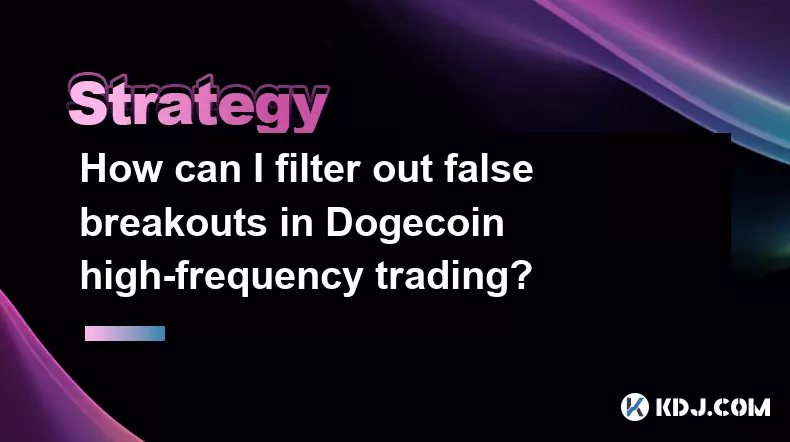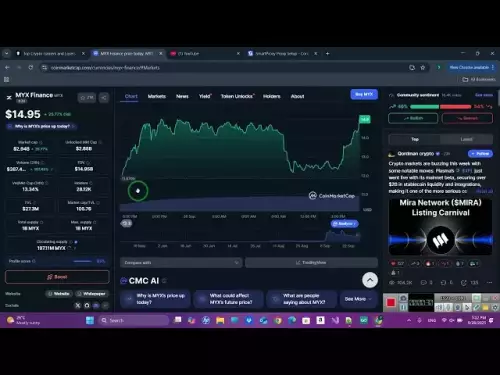-
 bitcoin
bitcoin $109547.008142 USD
0.04% -
 ethereum
ethereum $4011.838726 USD
-0.05% -
 tether
tether $1.000402 USD
-0.01% -
 xrp
xrp $2.798606 USD
0.88% -
 bnb
bnb $970.877944 USD
1.39% -
 solana
solana $202.237275 USD
-0.95% -
 usd-coin
usd-coin $0.999673 USD
0.00% -
 dogecoin
dogecoin $0.229294 USD
-1.15% -
 tron
tron $0.336370 USD
-0.45% -
 cardano
cardano $0.777260 USD
-1.66% -
 hyperliquid
hyperliquid $45.503019 USD
1.73% -
 ethena-usde
ethena-usde $1.000362 USD
0.01% -
 chainlink
chainlink $20.785303 USD
-1.10% -
 avalanche
avalanche $28.755822 USD
-0.11% -
 stellar
stellar $0.358303 USD
-0.48%
Is it better to DCA or lump sum invest in crypto?
Dollar-cost averaging (DCA) in crypto involves investing fixed amounts regularly, reducing volatility impact by buying more when prices are low and less when high.
Jul 12, 2025 at 12:14 pm

Understanding Dollar-Cost Averaging (DCA) in Crypto
Dollar-Cost Averaging (DCA) is an investment strategy where you invest a fixed amount of money at regular intervals, regardless of the asset's price. In the context of cryptocurrency, this means buying a set dollar value of a crypto asset every week, month, or any chosen timeframe. The primary advantage of DCA is that it reduces the impact of market volatility by spreading out purchases over time.
For example, if you decide to invest $100 in Bitcoin every Monday for six months, you’ll buy more Bitcoin when the price is low and less when the price is high. This approach helps mitigate the risk of investing a large sum just before a significant price drop.
The key benefit of DCA lies in its simplicity and emotional detachment from market fluctuations. It’s particularly useful for investors who want to participate in the crypto market without constantly monitoring prices or trying to time the market.
What Lump Sum Investing Means in Crypto
Lump sum investing refers to investing a large amount of capital all at once rather than spreading it out over time. In crypto, this could mean taking $5,000 and buying Ethereum immediately instead of investing $1,000 each week for five weeks.
This method relies on the assumption that markets generally trend upward over time. Historically, major indices like the S&P 500 have shown long-term growth, and many believe that top cryptocurrencies like Bitcoin and Ethereum will follow similar trajectories.
However, the main risk with lump sum investing is poor timing. If you invest a large amount right before a market correction or crash, your portfolio could suffer significant losses. This makes lump sum investing more suitable for those comfortable with higher levels of risk and confident in their market outlook.
Comparing Historical Performance: DCA vs. Lump Sum
Looking at historical data can provide insight into which strategy may be more effective in the crypto space. Studies on traditional assets show that lump sum investing often outperforms DCA because markets tend to rise more often than they fall.
In the case of Bitcoin, backtesting shows mixed results depending on the entry point. For instance, if someone had invested a lump sum in early 2020 before the bull run, they would have significantly outperformed a DCA strategy over the same period. However, during bear markets, such as in 2018 or early 2022, DCA helped investors avoid putting too much money in at peak prices.
Therefore, the effectiveness of either strategy depends heavily on market conditions and the specific cryptocurrency being purchased. There’s no universally superior method—each has its strengths and weaknesses depending on timing and market behavior.
Risk Tolerance and Investor Psychology
One of the most important factors in choosing between DCA and lump sum investing is investor psychology. Many people struggle with emotional decision-making, especially in highly volatile markets like crypto.
If you're prone to panic selling after a sharp price drop, DCA might be better suited for you. It allows you to build a position gradually, reducing the emotional burden of a single poor investment decision.
Conversely, if you’re comfortable with uncertainty and can stomach short-term losses in pursuit of long-term gains, then lump sum investing may align better with your mindset.
It's also worth noting that risk tolerance varies among individuals. Those with a higher risk appetite may lean toward lump sum investing, while conservative investors may prefer DCA to smooth out volatility.
Tax Implications and Practical Considerations
From a tax perspective, both strategies have implications depending on your jurisdiction. In some countries, each purchase made through DCA creates a separate cost basis, which can complicate tax reporting when selling.
With lump sum investing, there’s only one transaction, making record-keeping simpler. However, this also means you lock in a single cost basis, which may not be ideal if you end up purchasing near a market high.
Another practical consideration is transaction fees. Frequent small trades via DCA can add up in fees, especially on exchanges with high trading costs. On the other hand, lump sum investing incurs fewer fees since it involves only one transaction.
Additionally, if you’re using a platform that offers fee discounts for larger trades, lump sum investing could be more cost-effective in the long run.
When to Choose DCA vs. Lump Sum
There are certain scenarios where one strategy clearly makes more sense than the other. For example:
- If you're new to crypto and unsure about market timing, DCA can help reduce anxiety and provide a structured way to enter the market.
- If you receive a large sum of money, such as a bonus or inheritance, and believe the market is undervalued, lump sum investing may yield better returns over time.
- If you're investing in a highly speculative altcoin, DCA can spread out the risk of sudden price drops or rug pulls.
- If you have strong conviction in a particular project and believe it’s undervalued, lump sum investing allows you to accumulate more tokens at a lower price.
Ultimately, the choice depends on your confidence in the market, your financial situation, and how comfortable you are with volatility.
Frequently Asked Questions
Q: Can I combine DCA and lump sum investing?Yes, many investors use a hybrid approach. For example, they might invest a portion of their funds as a lump sum and continue to DCA additional contributions over time.
Q: Does DCA guarantee profit in crypto?No, DCA doesn’t guarantee profit. While it can reduce the impact of volatility, it doesn’t eliminate the risk of loss, especially in prolonged bear markets.
Q: Is DCA better for stablecoins or volatile coins?DCA is typically more beneficial for volatile assets. With stablecoins, which have minimal price movement, the benefits of DCA are negligible.
Q: Should beginners use DCA or lump sum investing?Beginners often benefit from DCA because it reduces the pressure of timing the market and encourages consistent investing habits.
Disclaimer:info@kdj.com
The information provided is not trading advice. kdj.com does not assume any responsibility for any investments made based on the information provided in this article. Cryptocurrencies are highly volatile and it is highly recommended that you invest with caution after thorough research!
If you believe that the content used on this website infringes your copyright, please contact us immediately (info@kdj.com) and we will delete it promptly.
- SUI, AAVE, BlockDAG: Decoding the Hottest Trends in Crypto
- 2025-09-29 06:45:13
- Snorter Bot: Your Ticket to 100x Crypto Presale Gems?
- 2025-09-29 06:25:16
- Crypto Casino Craze: Bitcoin Gambling & No Deposit Bonuses in 2025
- 2025-09-29 07:05:17
- Stellar Holds the Line: Fibonacci Levels, Breakout Potential, and XLM's Next Stellar Move
- 2025-09-29 06:45:13
- XRP Payments, Daily Wages, and Ripple Chief: A Revolution in Payroll?
- 2025-09-29 06:25:16
- Bitcoin, MAGAX, and the Surge: What Savvy Investors Are Eyeing Now
- 2025-09-29 07:05:17
Related knowledge

Practical parameter settings for a Bitcoin multi-timeframe moving average system
Sep 18,2025 at 10:54pm
Optimizing Timeframe Combinations for Bitcoin Trading1. Selecting appropriate timeframes is crucial when building a multi-timeframe moving average sys...

How can I filter out false breakouts in Dogecoin high-frequency trading?
Sep 22,2025 at 01:00am
Understanding False Breakouts in Dogecoin Trading1. A false breakout occurs when Dogecoin's price appears to move beyond a defined support or resistan...

Techniques for identifying tops and bottoms in the Bitcoin on-chain NVT model
Sep 20,2025 at 07:54pm
Understanding the NVT Model in Bitcoin Analysis1. The Network Value to Transactions (NVT) ratio is often described as the 'P/E ratio' of the cryptocur...

What does the surge in open interest in Bitcoincoin futures mean?
Sep 20,2025 at 11:18pm
Understanding the Surge in Dogecoin Futures Open Interest1. A surge in open interest within Dogecoin futures indicates a growing number of active cont...

How can I use the Ethereum USDT premium to gauge market sentiment?
Sep 18,2025 at 11:55pm
Understanding the Ethereum USDT Premium1. The Ethereum USDT premium refers to the price difference between USDT (Tether) traded on Ethereum-based plat...

What should I do if Ethereum staking yields decline?
Sep 20,2025 at 06:18am
Understanding the Causes Behind Declining Ethereum Staking Yields1. The Ethereum network transitioned to a proof-of-stake consensus mechanism with the...

Practical parameter settings for a Bitcoin multi-timeframe moving average system
Sep 18,2025 at 10:54pm
Optimizing Timeframe Combinations for Bitcoin Trading1. Selecting appropriate timeframes is crucial when building a multi-timeframe moving average sys...

How can I filter out false breakouts in Dogecoin high-frequency trading?
Sep 22,2025 at 01:00am
Understanding False Breakouts in Dogecoin Trading1. A false breakout occurs when Dogecoin's price appears to move beyond a defined support or resistan...

Techniques for identifying tops and bottoms in the Bitcoin on-chain NVT model
Sep 20,2025 at 07:54pm
Understanding the NVT Model in Bitcoin Analysis1. The Network Value to Transactions (NVT) ratio is often described as the 'P/E ratio' of the cryptocur...

What does the surge in open interest in Bitcoincoin futures mean?
Sep 20,2025 at 11:18pm
Understanding the Surge in Dogecoin Futures Open Interest1. A surge in open interest within Dogecoin futures indicates a growing number of active cont...

How can I use the Ethereum USDT premium to gauge market sentiment?
Sep 18,2025 at 11:55pm
Understanding the Ethereum USDT Premium1. The Ethereum USDT premium refers to the price difference between USDT (Tether) traded on Ethereum-based plat...

What should I do if Ethereum staking yields decline?
Sep 20,2025 at 06:18am
Understanding the Causes Behind Declining Ethereum Staking Yields1. The Ethereum network transitioned to a proof-of-stake consensus mechanism with the...
See all articles










































































